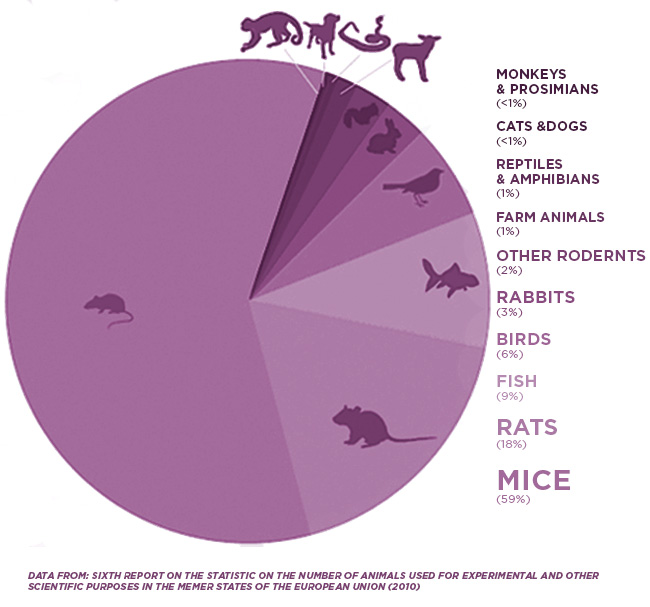Genetics
It is important to recognize the value of genetic background to the interpretation of experimental results. Knowledge about the origin of the laboratory mouse and the evolutionary history of its genome will hopefully inspire the scientist to select and refine their mouse strains and thus contribute to the reduction and refinement of animal experimentation (Yoshiki, 2006).
Inbred, Outbred, and Hybrid Mice
Researchers should understand the differences between inbred strains and outbred stocks. Inbred strains consist of individual mice that are genetically identical and homozygous at all alleles. While this can minimize experimental variation, the selection of a particular inbred strain for an experiment is important, as some strains are better suited for certain types of studies than others. Outbred stocks consist of genetically diverse populations. This may lead to more experimental variation, but a diverse experimental population may be desirable for particular studies. Outbred animals also tend to have superior reproductive performance.Importance of background strain
When creating mutant mice background strain is important to understand interaction of the mutation with the background phenotype. “An increasing number of scientific articles report that the phenotype of a given single gene mutation in mice is modulated by the genetic background of the inbred strain in which the mutation is maintained. This effect is attributable to so-called modifier genes, which act in combination with the causative gene” (Montagutelli, 2000). The various scid mouse strains known illustrate this concept. Scid mice in different backgrounds have different degrees of “leakiness” and different levels of immunodeficiency. For example, ICR scid mice are known to be less leaky whereas C.B-17 scid mice are more leaky and develop some T and B cells as they age.Nomenclature
Use of formal scientific nomenclature in paper method sections provides key information to other scientists. Proper nomenclature makes identification of the exact strain/stock used much easier. To ensure strict adherence to the rules of mouse strain nomenclature, editorial boards and referees should require detailed information about the animals used, and might go so far as to insist on inclusion of such details in the title and/or list of keywords so that studies performed on a specific mouse strain can be located more easily (Wotjak, 2003).Reproducibility
In scholarly articles it is of utmost importance to use precise and up-to-date nomenclature as well as vendor source in order for research to be reproducible and to allow others to expand on current research. In citing model background it is best to use the full nomenclature provided on a vendor website. Many publications reference using Black 6 mice from Taconic Biosciences, but do not note if these are the C57BL/6JBom or the C57BL/6NTac. While both models are a Black 6 there are 47 known SNPs difference between these 2 models.Xenograft studies are another good example, as authors will sometimes state only that “nude” or “scid” mice were used. Nudes and scid models are available on many different genetic backgrounds and at different health standards that can impact their performance in a study. While all scid mice lack T and B cells, the degree of leakiness varies by background strain, and the NOD scid in particular is more immunodeficient due to immune changes in the NOD background strain. Cell lines that engraft in an NOD scid might not successfully take in an ICR scid or C.B-17 scid, leading to wasted research resources when labs try to recreate a model system incompletely described in a paper.















.jpg)

.jpg)
.jpg)
.jpg)
.jpg)





.jpg)


.jpg)
.jpg)

.jpg)


.jpg)





.jpg)

.jpg)



